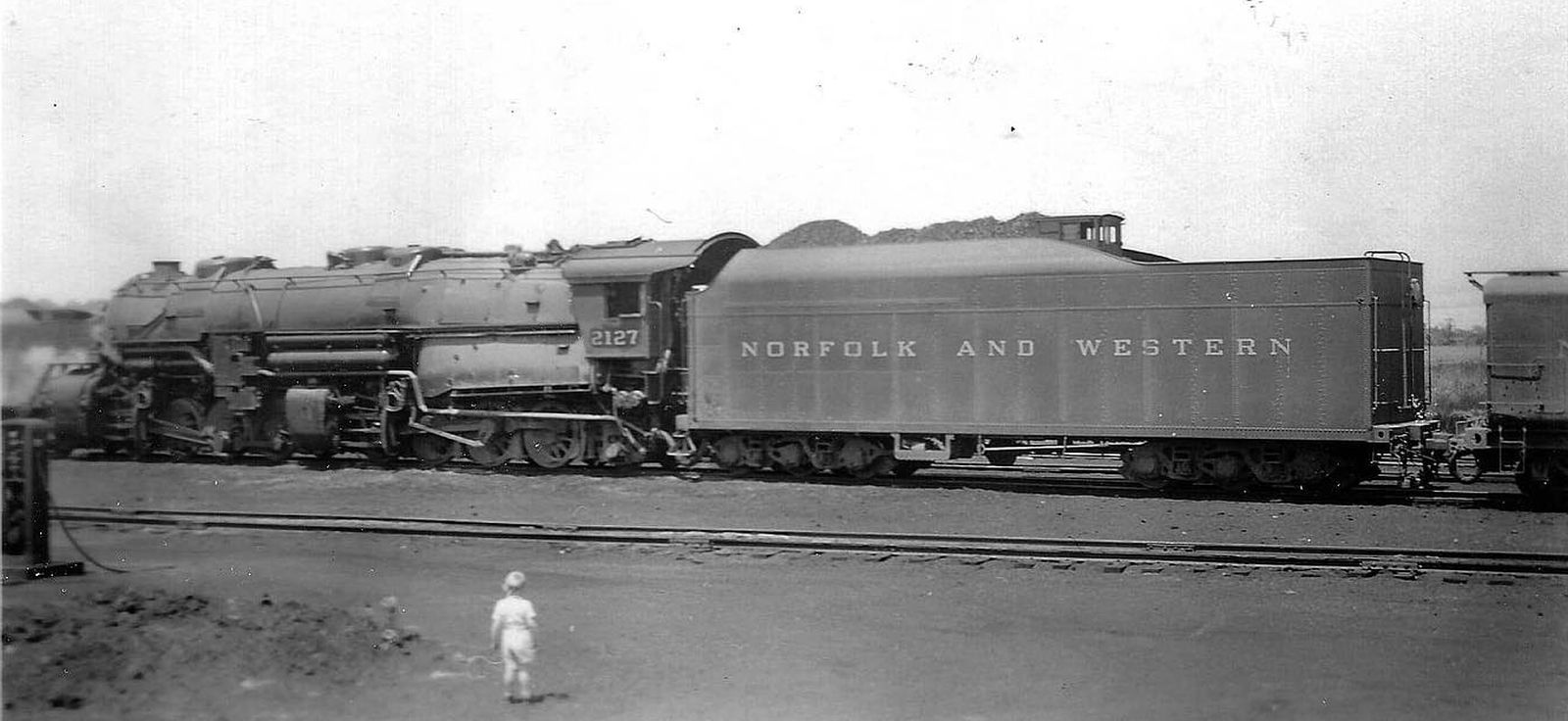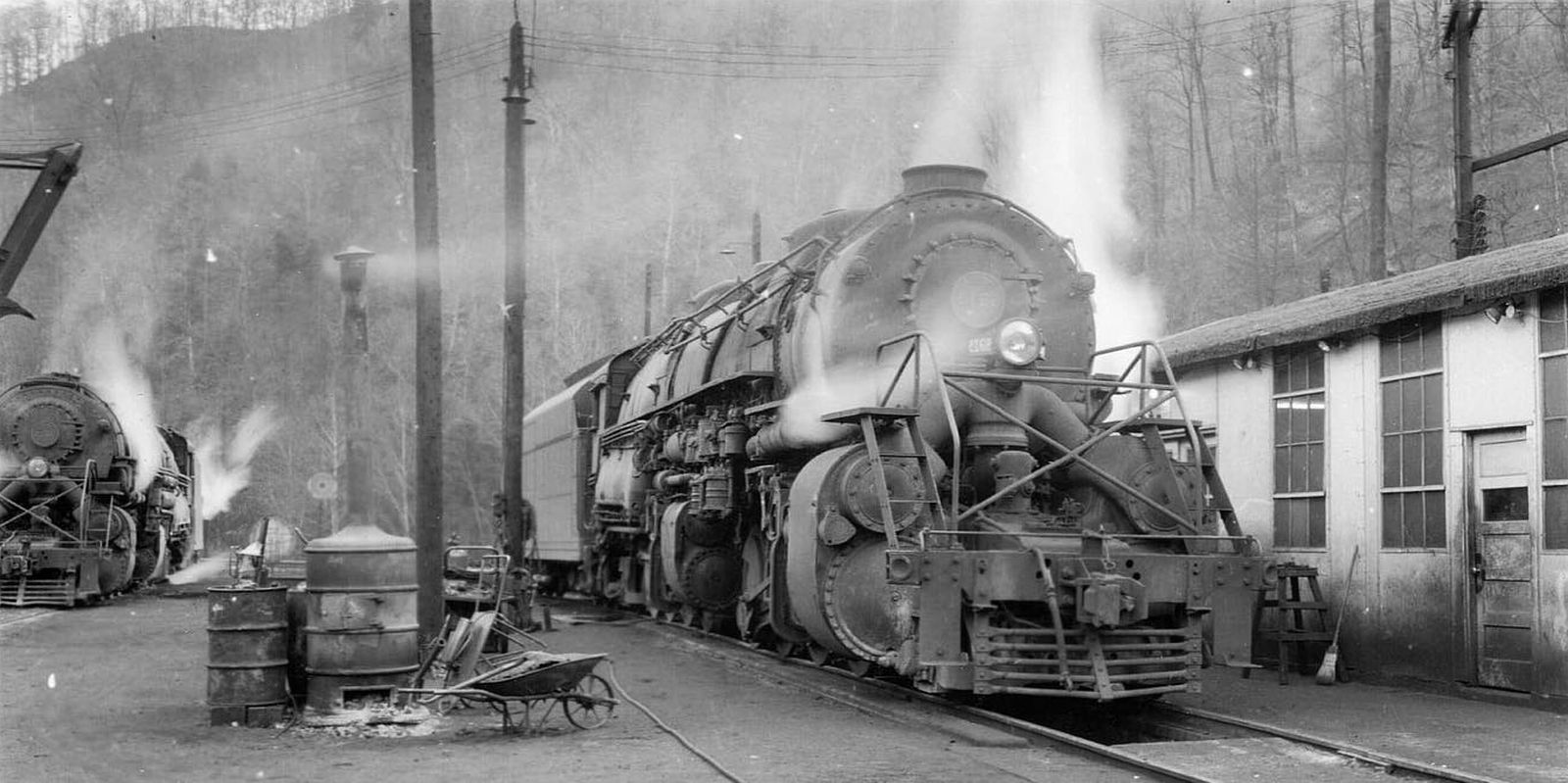The last generation in their series of 2-8-8-2 wheel arrangement Mallets, begun in 1910, was built by Norfolk & Western from 1930. While most other North American railroads had long since abandoned real Mallets and introduced ones with simple steam expansion instead the last series still had a compound engine. They were all made in the Roanoke workshops of Norfolk & Western and it all started with the Y4a as a development of the Y4 with an enlarged grate and significantly higher boiler pressure. Some optimizations were made to the internal piping that increased efficiency.

A young boy admires Y6 no. 2127 in May 1955
collection Taylor Rush
The first eight Y4a left the factory in 1930 and still had forged frames. On the ten Y5s from 1931, the frames were cast in one piece. The Y4as were also fitted with the new frames in 1940 and 1941. Also in 1940, 35 Y6s followed, in which the cylinders were now manufactured together with the frame as a cast part and had roller bearings on all axles. These were followed by another 15 Y6as, delivered in 1942.

Y6a no. 2162 (front) and Y6b no. 2200 (rear) in January 1958 at Grundy, Virginia
collection Taylor Rush
Between 1948 and 1952, 30 examples of the Y6b followed, which would become the most modern Mallet locomotives in North America. They featured a larger firebox and a special mechanism that allowed them to run at all speeds with single steam expansion, increasing tractive effort at the expense of efficiency. The front bogie with the low-pressure cylinders was weighed down with several tons of lead to increase the adhesive weight. The diameter of the coupled wheels was one inch larger, and these were also retrofitted to the predecessors. In the last few years of service, the locomotives were equipped with technical aids that increased the starting tractive effort to almost 170,000 pounds or 755 kN.
All in all, the locomotives are considered to be the most powerful, commercially successful steam locomotives ever. Some earlier prototypes could muster even higher starting tractive effort, but the boiler no longer provided sufficient steam as the speed increased. However, the Y4a to Y6b could also haul heavy trains at up to 50 mph and at 25 mph with 13,500 tons on the hook achieved a drawbar power of 5,500 hp. Although this was surpassed by the Big Boy, this was designed for higher speeds and therefore had a lower starting tractive effort than the locomotives described here with single steam expansion. These large Mallets were retired by 1960 and today only Y6a number 2156 survives. It belongs to the Saint Louis Museum of Transportation and is not roadworthy.